Introduction
Overview of Drone On
“Drone On” stands as a captivating exploration of the intricate balance between technology and humanity. This innovative piece delves into the life of drones—not just as mechanical entities but as metaphors for surveillance, control, and the human experience in a rapidly evolving technological landscape. With its unique storytelling approach, “Drone On” crafts a narrative that allows viewers to witness characters shaped by their environment and influenced by the omnipresence of drones in society. Imagine yourself walking through a busy city, where drones buzz overhead, capturing moments both mundane and extraordinary. You might feel a sense of wonder or perhaps an unsettling feeling of being watched. This duality is at the heart of “Drone On,” as it weaves together narratives from various perspectives, each reflecting the societal implications of living under the vigilant eye of drones. The film highlights various characters, from innocent bystanders to those who wield power through technology, creating a rich tapestry that invites introspection.
Importance of Decoding Hidden Meanings
In viewing “Drone On,” it’s crucial to look beyond the surface. The narrative is layered with symbolism that begs to be unpacked. Understanding these hidden meanings allows viewers to engage with the content more deeply, highlighting the broader commentary on contemporary issues. Here’s why diving into these nuances matters:
- Enhances Understanding: By decoding the underlying messages, you can appreciate the complexities of relationships between characters and the world they inhabit. This understanding invites you to relate to their experiences on a more personal level. For instance, one character may symbolize the struggle against invasion of privacy, while another may personify the ethically ambiguous nature of technological advancement.
- Promotes Critical Thinking: Analyzing the film encourages you to question the societal norms surrounding technology and its impact. Engaging in discussions around themes such as surveillance, autonomy, and ethics can stimulate critical thinking. Ask yourself:
- What does the presence of drones say about societal trust?
- How do these flying machines alter our interactions with one another?
- Fosters Empathy: The characters’ journeys compel you to empathize with their situations, enriching your emotional connection to the story. As you witness their struggles, triumphs, and failures intertwined with technology, reflections on your own experiences emerge, making you ponder the balance between convenience and privacy in your life.
Decoding the hidden meanings within “Drone On” not only enhances your viewing experience but also sparks conversations that resonate with pressing societal themes. So, the next time you engage with this film, consider what messages are embedded within the narrative and how they apply to the world around you.

Evolution of Drones
Historical Background
The journey of drones is as fascinating as the technology itself. Their history can be traced back to the early 20th century when the first unmanned aerial vehicles (UAVs) were conceptualized for military use. Imagine the excitement and curiosity among engineers and military strategists as they realized the potential of flying machines without pilots.
- 1917 – Kettering Bug: One of the earliest UAVs, the Kettering Bug, was developed during World War I. This pilotless drone was essentially a cruise missile designed for target practice.
- 1950s – Cold War Era: Fast forward to the Cold War, when drones were increasingly used for surveillance. The Ryan Firebee was one of the better-known drones from this era, primarily used for reconnaissance missions.
- 1980s – Technological Advances: The advent of electronic technology gave rise to more sophisticated UAVs. The RQ-2 Pioneer became the first drone to see combat, demonstrating the increasing military reliance on drones as an effective tool.
As drones evolved, they transcended their military origins to find applications in various industries. Today, they are more accessible and prevalent in everyday life, revolutionizing numerous sectors.
Modern Applications
In the present day, drones have morphed into multi-functional devices that serve a wide array of purposes. You may have seen them zipping around at outdoor events or transforming landscapes through innovative uses. Here are some key modern applications that showcase their versatility:
- Aerial Photography & Videography: Drones have made it possible for photographers and filmmakers to capture stunning aerial shots. Their ability to glide smoothly through the sky creates breathtaking visuals that were once limited to helicopters. Personal anecdotes abound, like wedding photographers incorporating drone shots, revealing unique perspectives of their clients’ special days.
- Delivery Services: Companies like Amazon and UPS are experimenting with drone deliveries. Imagine ordering your favorite book and having it arrive at your doorstep via drone in mere minutes. This innovation could redefine convenience and speed in package delivery within urban areas.
- Agriculture: Farmers are utilizing drones to monitor crops, assess field health, and even deliver pesticides. The precision and efficiency that drones bring can substantially enhance agricultural outcomes, allowing farmers to gather insights that result in higher crop yields.
- Search and Rescue Operations: Drones are invaluable in emergency situations. Equipped with thermal imaging cameras, they can locate missing persons in challenging terrains or assist in disaster recovery efforts by providing real-time overviews of affected areas.
- Infrastructure Inspection: From bridges to wind turbines, drones are being employed to inspect infrastructure for maintenance needs. This not only ensures safety but also reduces the risks involved in sending personnel to perform these tasks.
The evolution of drones from military tools to vital components across numerous sectors reflects a remarkable technological advancement. Their expansion into everyday applications has transformed the way we approach various tasks, creating opportunities that enhance efficiency and improve lives. As we continue to uncover their potential, it’s exciting to ponder what the future holds for this dynamic technology.
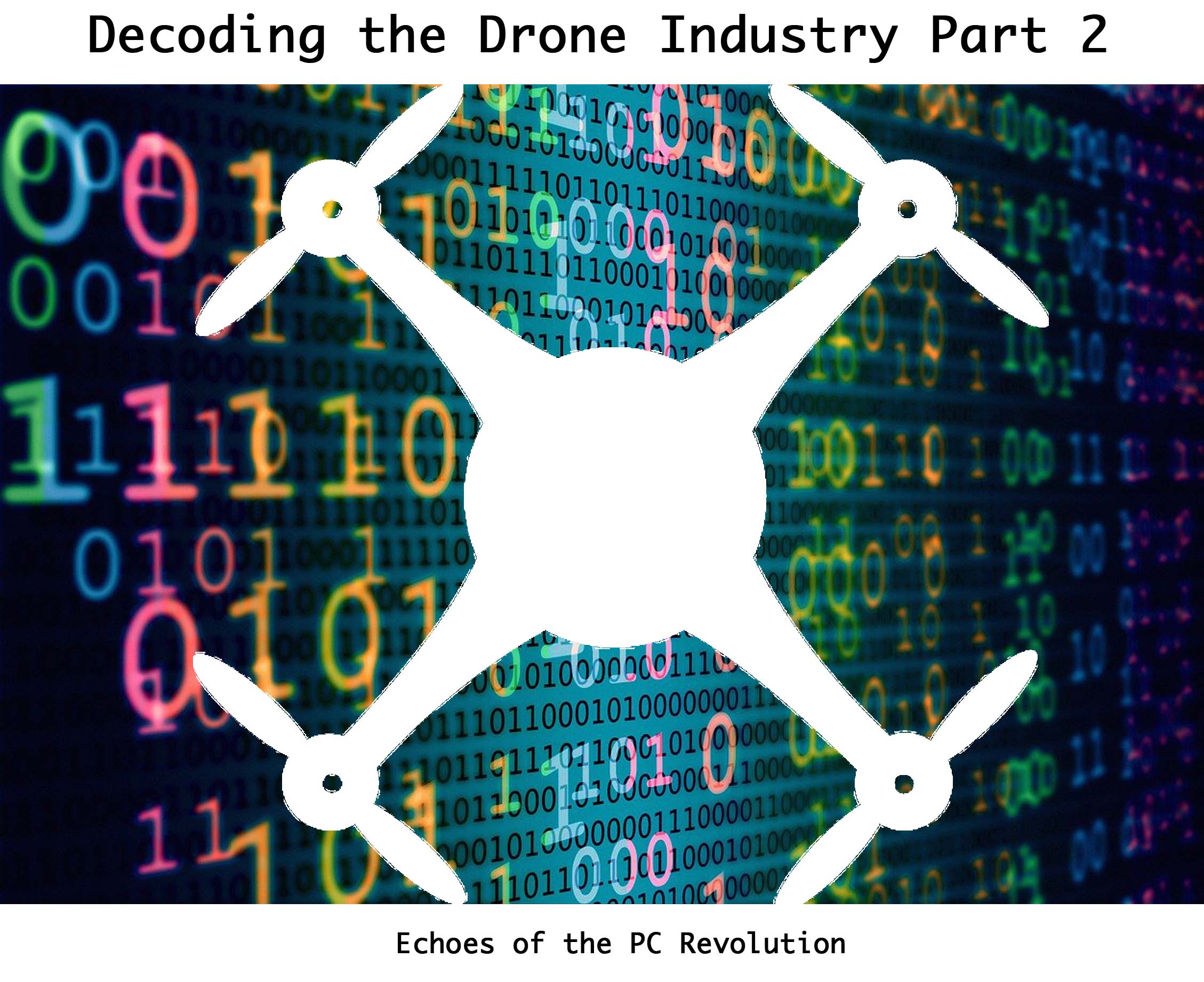
Symbolism in Drone On
Analysis of Characters
Characters in “Drone On” serve as more than just individuals navigating their lives; they embody deeper symbolic meanings that reflect our society’s relationship with technology. Each character is intricately designed, and understanding their roles can enrich your viewing experience.
- The Observer: One primary character often serves as an observer, constantly following others with a drone. This character symbolizes the societal inclination toward surveillance and the challenge of personal privacy. It’s easy to empathize with someone who grapples with ethical dilemmas, much like how we feel about our own interactions with technology. Remember that time when you hesitated to post something online, knowing that it could be forever immortalized? This character resonates with that internal struggle.
- The Rebel: In stark contrast, another character might embrace the chaotic freedom technology can provide. This character represents the perspective that recognizes technology as a tool for liberation rather than oppression. An example that comes to mind is those individuals who use drones for activism, capturing stories that mainstream media overlook. They take risks to document what others won’t, encouraging you to consider the potential for technology to drive social change.
- The Victim: A more tragic character might represent the individuals affected negatively by drone technology. Perhaps this character has lost a loved one due to drone surveillance, illustrating the collateral damage that such technology can inflict. Their journey invites viewers to empathize and reflect on the human costs associated with advancements.
Understanding these character archetypes allows you to connect more intimately with the film’s overarching message about technology’s dualities—its capacity to empower or endanger.
Interpretation of Plot
The plot of “Drone On” unfolds through a series of interconnected stories that highlight the impact of drones on everyday lives. At first glance, it may appear as a simple tale of drone adventures, but as you dig deeper, you realize that the narrative forms a rich commentary on modern life.
- Conflict and Resolution: The central conflict often revolves around the tension between technology and privacy. As characters confront the implications of drones in their lives, the underlying themes become clear:
- Surveillance vs. Freedom: Characters must navigate their desires for freedom while being continuously watched.
- Human Connection: The story often juxtaposes individuals isolated by technology against those striving to foster connections, showcasing the irony of our hyper-connected world.
- Symbolic Events: Key events in the plot hold significant weight. For instance, moments where characters turn to confront the drone may symbolize their rebellion against the system. You might recall those moments in the film when individuals challenge the status quo, sparking feelings of hope and resilience.
- Climactic Revelation: Towards the film’s climax, you might witness a moment of revelation that acts as a wake-up call for the characters. Such a moment encourages all viewers to question their relationship with technology and consider the consequences of their choices.
Ultimately, the interplay of symbolism within the characters and plot of “Drone On” encourages you to ponder technology’s roles—both as a facilitator of connection and as a barrier to genuine human experiences. This multifaceted storytelling invites you to reflect on the implications of living in a world filled with drones and surveillance, prompting a necessary dialogue about the future we are shaping.
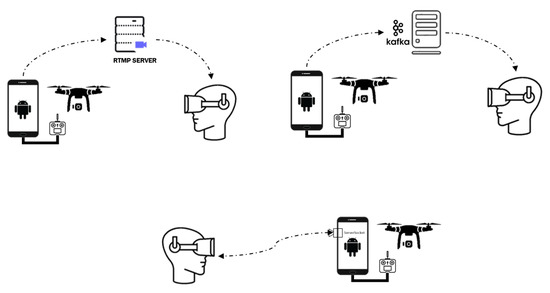
Social Commentary
Representation of Society
“Drone On” serves as a mirror reflecting the intricacies of modern society, illuminating both its strengths and weaknesses. The characters and plot arcs resonate with significant social themes, prompting you to reconsider the implications of our increasingly technology-driven lives.
- Fragmentation of Community: One prominent representation in the film is the fragmentation of community ties. Characters often find themselves isolated despite their physical proximity. For example, think of that moment in the film when two friends, sitting side by side, remain glued to their devices, disengaged from one another. This scenario illustrates how technology can create barriers rather than foster connections, a reality many of us can relate to in our own digital interactions.
- Surveillance Culture: The pervasive presence of drones throughout the narrative symbolizes the growing surveillance culture in society. As characters navigate their lives under the watchful gaze of technology, it raises critical questions: How much are you willing to sacrifice for safety? Is privacy a luxury we can afford in this age? These reflections compel viewers to confront uncomfortable truths about their own lives.
- Socioeconomic Disparities: The film subtly touches on issues of disparity as some characters utilize drones for empowerment, while others suffer from invasive surveillance. It stirs conversations about who has access to technology and who stands to benefit—or be harmed—by it. This leaves you wondering about the nature of progress: Is it truly beneficial for all, or does it enrich only a select few?
Critique on Technology
While “Drone On” marvels at the advancements in drone technology, it does not shy away from critiquing the darker side. The film probes the ethical implications of our relationship with technology, offering a balanced perspective that encourages you to think critically.
- Automation and Control: Drones symbolize automation’s growing role in our lives. As they perform tasks previously held by humans, the film raises essential questions about control and autonomy. Are we relinquishing power to machines? You might recall scenes where characters become overly reliant on drones, sparking a sense of unease about the potential consequences of automation creeping into everyday life.
- Ethical Dilemmas: The narrative addresses ethical dilemmas surrounding surveillance and personal freedoms. Scenes showcasing characters wrestling with their desire for security versus the need for privacy allow you to empathize with the conflicts that arise in your daily interactions with technology. Consider a moment when a character hesitates to act due to the fear of being watched—it’s a powerful reminder of how surveillance can stifle not just actions but also human creativity and spontaneity.
- Visual Representation of Consequences: The cinematography further underscores this critique, with aerial shots portraying a world where everything is visible but personal connections are diminished. This contrast invites you to reflect on the price we pay for technological advancement.
Through its nuanced social commentary, “Drone On” invites you to engage in critical discussions about who we are as a society and how technology is reshaping our interactions. It challenges you to consider not just the conveniences technology affords but also the profound implications it has on individuality, community, and ultimately, our shared humanity. As the film concludes, you leave with lingering questions and a heightened awareness of the world around you, urging you to view technology through a more discerning lens.

Psychological Perspectives
Impact on Characters
In “Drone On,” the various characters are deeply affected by the presence of drones, illustrating the psychological nuances that arise in a tech-saturated world. Each character encapsulates different responses to the omnipresence of surveillance and technology, providing a window into their psyches.
- Anxiety and Paranoia: One palpable impact on characters is the growing anxiety and paranoia they experience. As the drones observe their every move, this constant surveillance breeds a heightened sense of insecurity. Consider a scene where a character glances nervously skyward, their dialogue shifting from casual conversation to panic as they grapple with their perceived loss of privacy. This reflects a very real phenomenon that many experience in today’s data-driven society.
- Isolation vs. Connection: Characters also struggle with feelings of isolation in a hyper-connected world. For instance, a character who initially thrives on social media interaction finds themselves increasingly isolated, realizing that digital connections lack the warmth of in-person interactions. This psychological conflict can resonate with anyone who has felt disconnected despite being surrounded by “friends” online. Watching these characters navigate their relationships allows you to reflect on your own interactions and the emotional costs of living in a digitally dominated landscape.
- Identity Crisis: Growing up under the gaze of drones creates an identity crisis for several characters. They question who they are and how they fit into a world that seems to have predetermined roles based on technological capabilities. One example might be a young adult who feels pressure to conform to societal expectations dictated by social media algorithms, showcasing how technology can warp self-perception.
Subconscious Motivations
Looking deeper into “Drone On,” we uncover the subconscious motivations driving character behaviors. Their actions often reveal broader themes relating to human nature and societal pressures.
- Desire for Control: Many characters exhibit a subconscious desire to reclaim control over their lives amid external surveillance. For instance, a character who initially uses drones to monitor others becomes paranoid about the potential loss of agency. This struggle embodies the broader human instinct to seek autonomy in an age where technology threatens to dictate existence.
- Fear of Vulnerability: There’s also a prevalent fear of vulnerability that drives character actions throughout the narrative. Characters may deliberately engage in extreme behaviors to protect themselves from perceived threats, stemming from a deep-seated fear of being exposed. Watching a character decide to go “off the grid” illustrates this concept vividly, illustrating a primal instinct to shield oneself from exposure and invasion.
- Search for Authenticity: Underneath the surface, you can sense a collective yearning for authenticity. Characters often grapple with maintaining genuine relationships amidst a barrage of edited online personas and drone-surveillance technology. You may find yourself relating to their longing for real connections that foster trust and understanding, as it is a universal desire for most individuals navigating the complexities of modern life.
Through these psychological perspectives, “Drone On” deftly conveys the emotional turmoil and complexities faced by individuals in an evolving technological landscape. The film inspires profound reflection on our own subconscious motivations and societal pressures, shedding light on the psychological implications of a world dominated by surveillance and technology. As you engage with these themes, you may find yourself questioning not only societal norms but your own behaviors in relation to the technologies that surround your life.
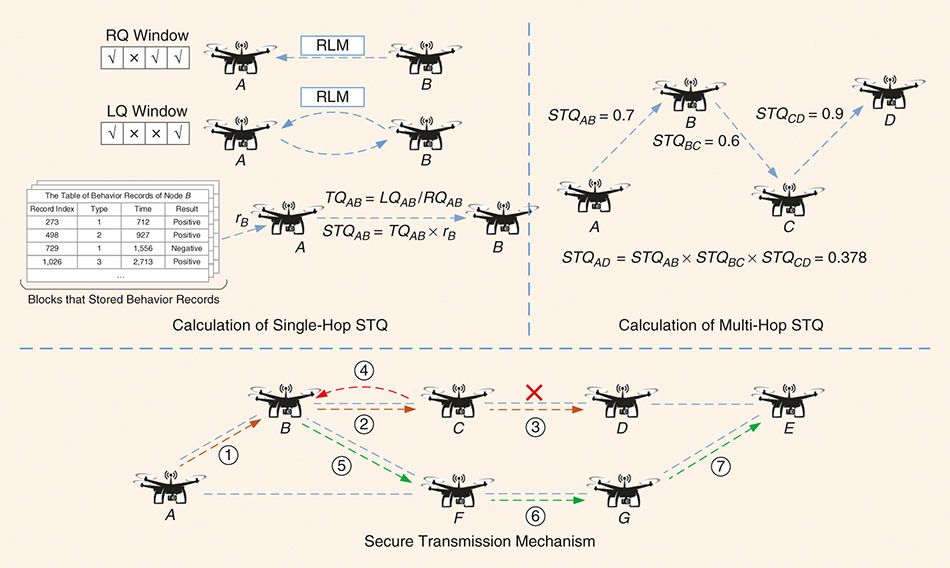
Cultural Relevance
Influence on Pop Culture
“Drone On” is not just a film; it has made waves in the realm of pop culture, tapping into the zeitgeist surrounding technology and surveillance. Its themes resonate widely, bringing forth discussions that not only entertain but also illuminate pressing societal issues.
- Incorporation in Music and Art: The film has inspired a variety of artistic expressions. Musicians have started writing songs reflecting on the themes of surveillance, privacy, and technology. Think of an indie band releasing a track entitled “Eyes in the Sky,” echoing the sentiments presented in “Drone On.” Artists are also experimenting with visual installations that use drone technology to create immersive experiences, further embedding the film’s motifs in contemporary art scenes.
- Trending Topics in Media: Talk shows and podcasts have jumped on the bandwagon, inviting discussions about the implications of drone surveillance in everyday lives. From comparing “Drone On” to classic spy films to analyzing its relevance in today’s world, various media outlets reflect the film’s influence by dissecting its impact. Your own experiences may echo these conversations, reminding you of the moments you’ve spent discussing technology’s role in your social narratives.
- Inspiring New Narratives: As films like “Drone On” gain traction, they inspire other filmmakers to explore drone technology and its implications, leading to a new genre of films focused on society’s relationship with surveillance. You might notice that many upcoming blockbusters are incorporating drones in their plots, indicating a shift in storytelling that melds thrilling action with social responsibility.
Global Perception
Beyond pop culture, “Drone On” has also shaped global perceptions about technology and surveillance. Its reach crosses borders, provoking debates about the ethical dimensions of drone technology in various cultural contexts.
- Cross-Cultural Dialogues: The film resonates with diverse audiences, prompting discussions that transcend geographical barriers. In countries where surveillance is prevalent, viewers may relate the narrative to their personal experiences living under surveillance regimes. You might even find that people from different cultures appreciate the film differently; in some regions, it might amplify concerns over privacy, while in others, it may highlight a desire for security.
- Conversations About Regulation and Ethics: “Drone On” opens up dialogue about the need for regulations surrounding drone usage. Global discussions about privacy laws and the ethical use of technology have gained momentum, spurred in part by the film’s narrative. For instance, recent debates in various countries on legislation governing the use of drones reflect the conversations ignited by the film, showcasing the real-world implications of its themes.
- Shaping Attitudes Toward Technology: The film encourages viewers to critically evaluate their relationship with technology, fostering a global movement toward awareness and inclusivity in tech discussions. By presenting the issues surrounding drones, it prompts viewers to be more informed about their rights regarding surveillance, privacy, and data security. It’s a gentle nudge to consider how technology impacts daily life, urging individuals worldwide to demand transparency and ethical practices.
In essence, “Drone On” serves as a cultural touchstone that not only entertains but sparks vital conversations about technology’s role in society. Its influence on pop culture and the global perception of surveillance elevates it from mere entertainment to a meaningful critique of modern life, reminding us that the implications of technology touch us all, regardless of where we are in the world. As viewers, you are encouraged to engage with these cultural dialogues, allowing the themes of the film to shape your perspective on the technologies that permeate everyday existence.

Cinematographic Techniques
Visual Storytelling
In “Drone On,” the cinematographic techniques employed are nothing short of masterful, using visual storytelling to enhance the film’s profound themes. Every frame is thoughtfully composed, deliberately guiding your gaze and emotions.
- Aerial Perspectives: The use of drones to capture sweeping aerial shots adds layers of meaning to the narrative. These mesmerizing views present a stark contrast between the vastness of the landscape and the characters’ feelings of isolation. For instance, there’s a breathtaking moment when a character stands alone in a field, and the camera rises above, emphasizing their loneliness amidst the expansive world. It’s a visual representation of how, despite technological advancements, personal connections can feel distant.
- Color Palette: The film employs a distinct color palette that shifts throughout the narrative. Each hue conveys emotional tones; warm, vibrant colors illustrate moments of joy and connection, while cooler tones accentuate feelings of anxiety and isolation. You might remember a scene in which a character grapples with their feelings, captured in sharp, cold blues that evoke somber moods. This strategic use of color encourages you to feel the characters’ emotions viscerally.
- Symbolic Frames: Symbolism in framing is another key aspect of the film’s visual storytelling. For example, the way certain characters are often framed within doorways or windows showcases their entrapment in a world dominated by surveillance. It’s a brilliant reminder that while technology opens doors to new opportunities, it can also confine individuals, keeping them within the narrow confines of societal expectations.
These visual elements not only serve the narrative but also enhance your engagement with the characters and their struggles, making the experience more immersive and thought-provoking.
Sound Design
Alongside the striking visuals, the sound design in “Drone On” plays a pivotal role in amplifying the storytelling, setting the mood, and influencing audience perception.
- Ambient Sounds: The background sounds—like the subtle whir of drones hovering overhead or the distant chatter of urban life—immerse you in the film’s atmosphere. These elements create a sense of realism, making you acutely aware of the omnipresence of technology. One moment that stands out is when the sound of a drone suddenly drowns out the characters’ voices, forcing quiet contemplation on the power of technology to overshadow personal interactions.
- Musical Score: The film’s score, often haunting and ethereal, enhances the emotional landscape of the story. Slow, melancholic melodies tend to underscore moments of reflection, while tense, pulsating beats accompany scenes filled with uncertainty. You might find yourself feeling the tension build during climactic moments, effectively pulling you into the characters’ emotional journeys.
- Contrasting Soundscapes: Additionally, contrasting soundscapes are used to emphasize the divide between surface-level beauty and underlying chaos. For instance, serene scenes of nature could shift abruptly to the stark sounds of machinery, reflecting the conflict between humanity and technology. This duality prompts you to consider your own reactions to the encroachment of technology into your life, paralleling the characters’ dilemmas.
In summary, the cinematographic techniques utilized in “Drone On”—from visual storytelling that evokes emotion to a sound design that enhances the atmosphere—help create a multi-dimensional experience that resonates long after the credits roll. Each element works in harmony to deepen your understanding of the characters’ struggles and the society they inhabit, encouraging you to ponder the complex relationship between humanity and technology. As you reflect on the film, you’ll likely discover that the artistic choices made contribute profoundly to its message, making the experience of watching it truly unforgettable.
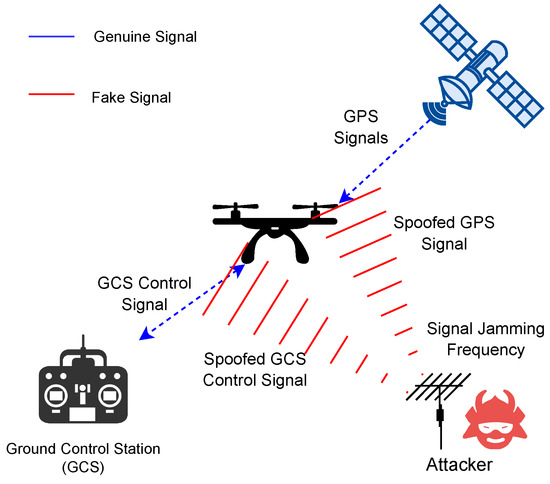
Ethical Considerations
Privacy Concerns
One of the most pressing ethical considerations raised in “Drone On” is the issue of privacy. As drones become increasingly prevalent in both public and private spaces, the film invites the audience to ponder the balance between safety and personal freedom.
- Surveillance and Personal Space: The presence of drones in the film represents a constant surveillance that many viewers can relate to in today’s world. For example, a character who feels their every move is monitored might remind you of the anxiety that can arise from being surveilled—in stores, on social media, or even in your own neighborhood. This portrayal resonates particularly well in an age where smartphones and technology have blurred the lines of privacy.
- A Subtle Invasion of Privacy: The film thoughtfully addresses the subtle yet pervasive invasion of privacy that drones exemplify. Characters frequently react to the knowledge of being watched, showcasing how this knowledge can alter behaviors and relationships. You may recall a particularly poignant scene where someone hesitates to express genuine emotions because they fear being recorded. This aspect serves as a powerful reminder that privacy is an essential pillar of personal freedom—something that can be easily undermined in a surveillance culture.
- Public vs. Private Spaces: “Drone On” raises questions about the nature of public versus private spaces. Where does one’s expectation of privacy begin and end when drones are involved? Reflect on your own experiences—have you ever felt uncomfortable knowing that cameras or drones were capturing public spaces, particularly in vulnerable moments? This relatable tension between safety and privacy creates a compelling narrative arc in the film, prompting you to think critically about your own stance on these issues.
Legal Implications
As the film delves into the ethical implications of drone technology, it also invites critical conversations about the legal frameworks surrounding drone use. With advancements in technology often outpacing regulatory measures, the film explores several key legal dilemmas.
- Lack of Regulation: One significant issue portrayed is the current lack of comprehensive regulations governing drone use. Many characters navigate gray areas of legality as they grapple with the consequences of their actions—reflecting real-world dilemmas faced by policymakers. Imagine an instance where a character uses a drone to document an event, only to find themselves facing legal repercussions due to ambiguous laws. This potential for legal pitfalls highlights the necessity for updated regulations that adequately address modern tech.
- Balancing Innovation and Responsibility: The film also addresses the tension between encouraging technological innovation and ensuring responsibility in its use. There’s an underlying lesson that laws lag behind technological progress, which can lead to misuse. Viewers are encouraged to consider how to foster innovation while implementing ethical standards. Think about your own perception—are you excited by new technologies but also concerned about their potential abuses? This dual awareness is critical in today’s fast-evolving tech landscape.
- Accountability and Consequences: Characters in “Drone On” grapple with the accountability of their actions in a world flooded with drone technology. The film raises critical questions: Who should be held responsible when drone surveillance crosses ethical lines? If a drone captures footage of a private moment that is later weaponized, what legal recourse do individuals have? These questions provoke thought and discussion about the responsibilities tied to such powerful tools.
Ultimately, “Drone On” addresses the ethical and legal complexities surrounding drone technology, prompting you to reflect on your own values regarding privacy and responsibility. As you engage with these themes, you’re encouraged to consider not only the implications of technology on a personal level but also the broader societal consequences. The film effectively serves as a catalyst for important conversations about how society navigates the intersection of technology, ethics, and law, reminding us that these discussions are both timely and vital.

Reception and Reviews
Critic’s Interpretations
“Drone On” has garnered significant attention from film critics, many of whom have offered varied interpretations of its themes and artistic techniques. Critics have praised the film not just for its storytelling but also for its poignant commentary on modern society.
- Thought-Provoking Commentary: Many critics highlight that the film serves as a stark warning about the implications of surveillance in contemporary life. One respected film critic noted that “Drone On” is “more relevant than ever,” especially in an age where technology infiltrates every aspect of our lives. They argue that the film challenges viewers to confront their own complacency regarding personal privacy.
- Artistic Cinematography: Critics often applaud the visual storytelling aspects, emphasizing how cinematographic choices enhance the narrative. For example, a popular review pointed out the clever use of aerial shots to symbolize a duality of perspective—the feeling of being both liberated and confined by technology. This type of insight allows you to appreciate the artistry behind the film, as it weaves together visuals and themes seamlessly.
- Character Depth: A common thread in critical reviews is the characters’ complexity. Critics have appreciated the film’s investment in character development rather than simply using them as vehicles for a message. One critic remarked, “The characters are profoundly human and relatable, revealing the intimate effects of technology on individuals.” You might find yourself connecting with how these characters mirror your struggles or experiences, making the film even more impactful.
Audience Reactions
While critics have praised “Drone On,” audience reactions provide an equally fascinating perspective on the film, often reflecting a spectrum of emotions and discussions.
- Relatable Reactions: Many viewers have shared how they found the themes eerily relatable. One audience member expressed, “Watching the film made me realize how often I feel like I’m being watched. It hit close to home.” These sentiments highlight the film’s ability to resonate with everyday struggles regarding privacy and technology, prompting deeper reflections on their personal experiences.
- Fostering Discussions: Screenings of “Drone On” have sparked lively discussions among viewers about the ethics of technology. Groups often engage in conversations afterward, discussing the balance between surveillance for safety versus the preservation of privacy. You might remember an engaging conversation with friends after watching it together, delving into your own opinions and feelings toward technology—a testament to the film’s ability to ignite dialogue.
- Mixed Reviews: Not all audience reactions have been universally positive, though. Some viewers expressed disappointment in pacing, feeling that some themes were overly explored. One viewer mentioned, “It felt like the film could have been tighter; I loved the message, but I wanted more action.” This feedback is a reminder that while art can inspire, it may not resonate with everyone in the same way.
In summary, the reception of “Drone On” has created a significant impact—both critically and among general audiences. Critics have lauded its exploration of surveillance and privacy, facilitated by striking cinematography and multidimensional characters. Meanwhile, audiences have embraced the film’s themes on a personal level, fostering discussions and provoking reflections on their technology-filled lives. Whether you find yourself aligned with critics or resonating with fellow viewers, engaging with “Drone On” inevitably opens avenues for meaningful conversations about the intersection of technology and humanity, reminding you of the importance of questioning the world around you.
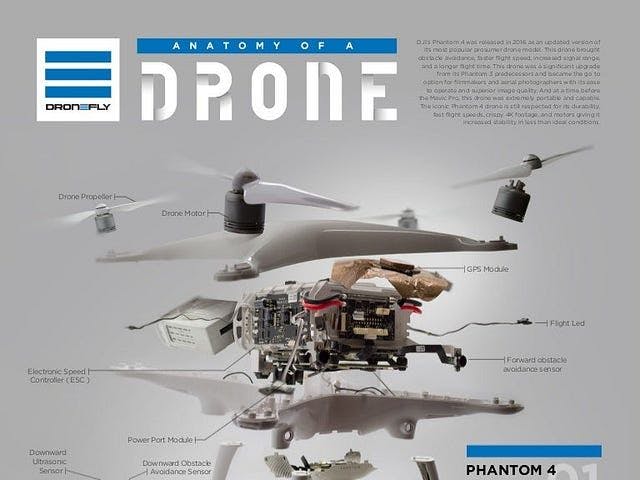
Conclusion
Key Takeaways
Reflecting on “Drone On,” it becomes clear that this film is much more than just an engaging narrative about technology. It invites viewers to probe deeper into pressing societal issues and their implications on personal lives. Here are some key takeaways:
- Surveillance vs. Privacy: One of the most prominent themes is the tension between surveillance and personal privacy. The film’s portrayal of society grappling with being watched resonates with our current realities, reminding you to consider how technology can impact your freedom and sense of security.
- Human Connection: Throughout the film, the struggle for genuine human connection appears consistently, emphasizing that while technology can enhance connectivity, it can also lead to emotional distances. Think back on your own experiences—how have your digital interactions affected your relationships? This exploration prompts you to evaluate the quality of your connections in an age dominated by screens.
- Ethical Implications: The film effectively raises ethical questions surrounding drone technology. It pushes you to contemplate the responsibilities tied to technological advancements and what that means for future generations. Engaging in discussions about privacy and regulation is essential, underscoring the need for proactive measures in crafting technology that serves humanity without infringing on individual rights.
- Cultural Reflections: “Drone On” serves as a cultural touchstone, highlighting how media can reflect and shape social conversations. It’s evident that the film has become a part of the discourse on technology, inspiring new dialogues about the implications of growing surveillance.
Final Thoughts
Ultimately, “Drone On” invites you not only to immerse yourself in a compelling narrative but also to engage with the broader questions it raises. As you reflect on the film, consider how it mirrors your experiences and challenges the status quo regarding technology’s role in society. It serves as a call to action for contemporary audiences to engage critically with the tools that pervade our lives.
- Make Informed Choices: In an age where information is readily available, this film encourages you to make informed choices about your interactions with technology. Whether it’s setting boundaries for social media use or actively participating in conversations about privacy rights, it’s essential to be proactive rather than reactive.
- Engage in Dialogue: Take the insights gained from “Drone On” and share them with friends, family, or on social media. Engage in dialogues about the ethical implications of technology and how it shapes your everyday life. By having these discussions, you contribute to a culture of awareness that values both innovation and responsibility.
In closing, “Drone On” empowers you to navigate today’s complex landscape filled with technological advancements. As you move forward in a world where drones and surveillance are part of the fabric of life, let the film’s messages resonate with you. Embrace the responsibility of questioning the impact of these technologies, fostering deeper connections, and prioritizing ethics in every technological interaction. By doing so, you will be better equipped to shape a future where technology serves humanity with integrity and respect.



